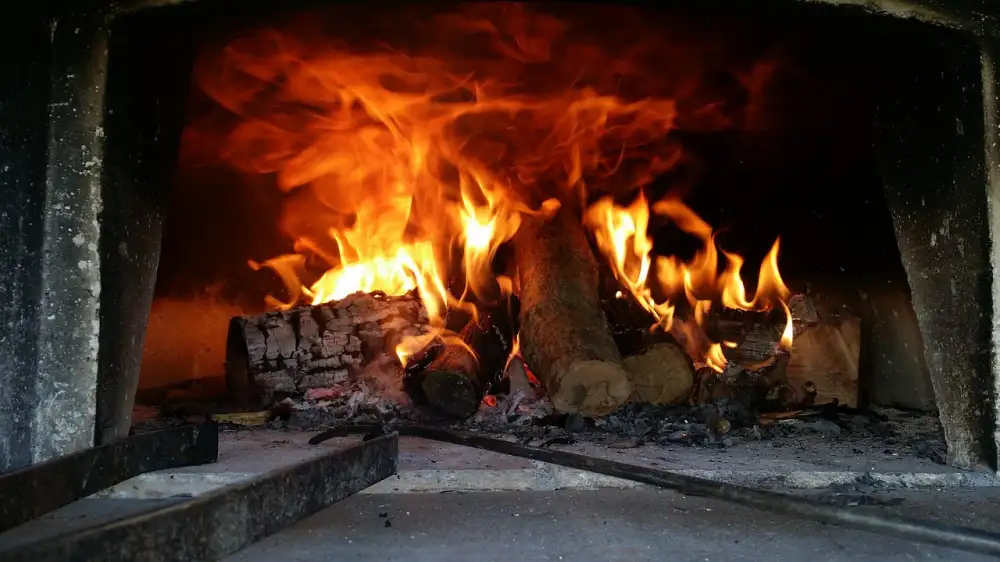Mastering Your Convection Oven: Essential Tips for Home Chefs

- Understanding the Difference Between Conventional and Convection Ovens
- Preheating Your Convection Oven
- Adjusting Cooking Temperatures and Times
- Placement of Cookware in the Convection Oven
- Utilizing the Convection Fan Effectively
- Monitoring Your Food While Cooking
- Cleaning and Maintenance Tips for Your Convection Oven
- Troubleshooting Common Issues with Convection Ovens
Convection ovens are a game-changer in the kitchen, offering faster and more even cooking results compared to conventional ovens. The key feature of a convection oven is its fan, which circulates hot air around the food, promoting better heat distribution and reducing cooking times. This efficient method allows for crispier crusts, juicier meats, and perfectly baked goods. Whether you're a novice cook or a seasoned chef, mastering the art of convection cooking can elevate your culinary skills to new heights. Let's explore essential tips for harnessing the full potential of your convection oven.
Understanding the Difference Between Conventional and Convection Ovens
Understanding the difference between conventional and convection ovens is crucial for home chefs looking to maximize their cooking potential. Conventional ovens use radiant heat from the top and bottom heating elements to cook food, resulting in uneven heat distribution and longer cooking times. In contrast, convection ovens have a fan that circulates hot air around the food, ensuring even heat distribution and faster cooking times. This fan also allows for lower cooking temperatures and reduces the risk of hot spots, making convection ovens ideal for baking, roasting, and broiling.
Preheating Your Convection Oven
Preheating your convection oven is crucial for optimal cooking results. Unlike conventional ovens, convection ovens require less preheating time due to their efficient air circulation system. It is recommended to preheat your convection oven approximately 25 degrees Fahrenheit lower than the temperature stated in the recipe. This adjustment accounts for the even heat distribution in a convection oven, ensuring that your food cooks evenly and efficiently. Always allow sufficient time for preheating before placing your food inside to achieve the best cooking outcomes.
Adjusting Cooking Temperatures and Times
When using a convection oven, it's crucial to adjust cooking temperatures and times for optimal results. Due to the circulating hot air in convection ovens, they cook food faster than conventional ovens. As a general rule of thumb, reduce the temperature by 25°F compared to what a recipe calls for when using a convection oven. Additionally, you should also decrease the cooking time by about 25% to prevent overcooking. It's essential to keep an eye on your food as it cooks to ensure it doesn't burn or dry out. By making these adjustments, you can achieve perfectly cooked dishes every time with your convection oven.
Placement of Cookware in the Convection Oven
When using a convection oven, it is crucial to consider the placement of cookware for optimal cooking results. Unlike in a conventional oven where heat radiates from the bottom and top, in a convection oven, hot air circulates around the food. To ensure even cooking, leave enough space between pans for proper air circulation. Avoid overcrowding the oven as this can obstruct airflow and lead to unevenly cooked dishes. Use shallow pans instead of deep ones to allow hot air to reach all sides of the food evenly. Additionally, always use cookware that is recommended for convection ovens to prevent damage or poor results. By paying attention to the placement of your cookware, you can make the most out of your convection oven's capabilities and achieve deliciously cooked meals every time.
Utilizing the Convection Fan Effectively
Utilizing the convection fan in your oven effectively can significantly improve cooking results. The fan helps to distribute heat evenly throughout the oven, ensuring that food cooks more quickly and uniformly. To maximize its effectiveness, avoid overcrowding the oven with too many dishes at once, as this can block airflow. Additionally, use shallow or low-sided pans to allow hot air to circulate freely around the food. Experiment with different rack positions to find the optimal placement for your dishes to ensure even browning and consistent cooking. By harnessing the power of the convection fan, you can achieve professional-quality results in your home kitchen.
Monitoring Your Food While Cooking
It is crucial to keep an eye on your food while it is cooking in a convection oven. The circulating hot air can cook food faster and more evenly than in a conventional oven, so it's essential to check on your dish periodically to prevent overcooking. Use a timer to remind yourself to check the progress of your food, especially when trying out new recipes or adjusting cooking times. Avoid opening the oven door too frequently as this can cause temperature fluctuations and disrupt the cooking process. Instead, use the oven light and window to visually inspect your dish without letting heat escape. By staying attentive and monitoring your food closely, you can ensure that it cooks perfectly in your convection oven.
Cleaning and Maintenance Tips for Your Convection Oven
Cleaning and maintaining your convection oven is essential to ensure its optimal performance and longevity. Start by allowing the oven to cool completely before cleaning. Remove any food residue or spills with a damp cloth or sponge. For tougher stains, use a non-abrasive cleaner recommended by the manufacturer. Regularly clean the convection fan and vents to prevent buildup that can affect airflow. Remember to also clean the oven racks and trays separately with warm, soapy water. Lastly, schedule professional maintenance at least once a year to keep your convection oven in top condition.
Troubleshooting Common Issues with Convection Ovens
1. Uneven Baking: If you notice that your food is cooking unevenly, try rotating the baking pans halfway through the cooking time to ensure even heat distribution.
2. Overcooking: Convection ovens cook food faster than conventional ovens, so it's important to reduce both the temperature and cooking time specified in recipes by about 25 degrees Fahrenheit and 25% respectively.
3. Burnt Tops: To prevent the tops of your dishes from burning, consider covering them loosely with aluminum foil for the first half of the cooking time and then removing it to allow browning.
4. Excessive Drying: If your food is drying out too quickly in a convection oven, lower the temperature or cover it with a lid or foil to retain moisture.
5. Fan Not Working: If you notice that the convection fan is not running, check for any obstructions blocking its rotation or consult a professional technician for repairs.
By addressing these common issues proactively, home chefs can make the most of their convection ovens and enjoy consistently delicious results in their culinary creations.
In conclusion, mastering your convection oven can greatly enhance your cooking experience at home. By understanding the differences between conventional and convection ovens, preheating properly, adjusting temperatures and times, placing cookware correctly, utilizing the convection fan effectively, monitoring food while cooking, and maintaining your oven regularly, you can achieve delicious results consistently. Remember to troubleshoot common issues promptly to ensure optimal performance. With practice and attention to detail, you'll soon become a pro at using your convection oven for all your culinary creations.
Published: 21. 04. 2024
Category: Home



